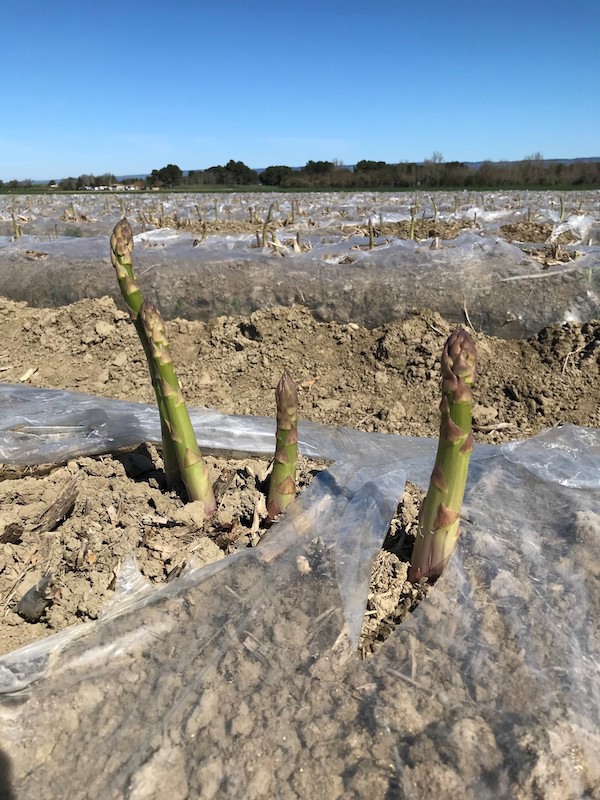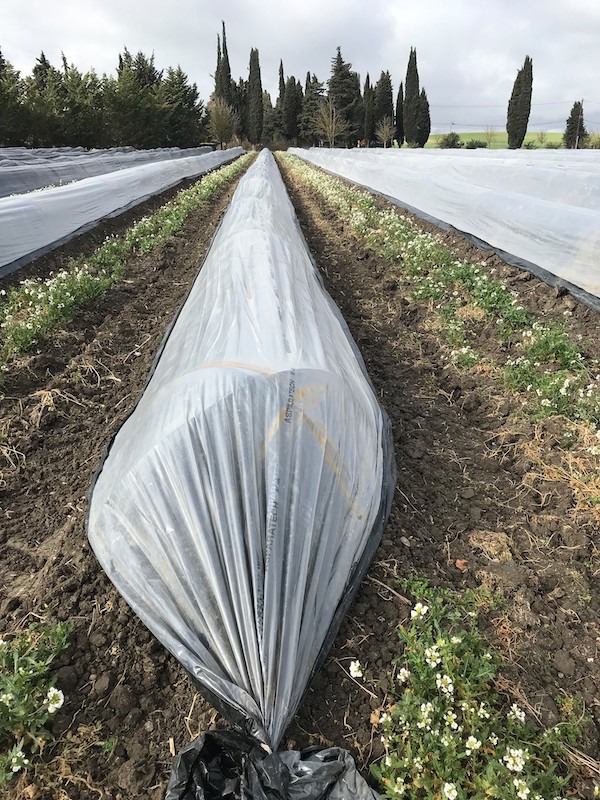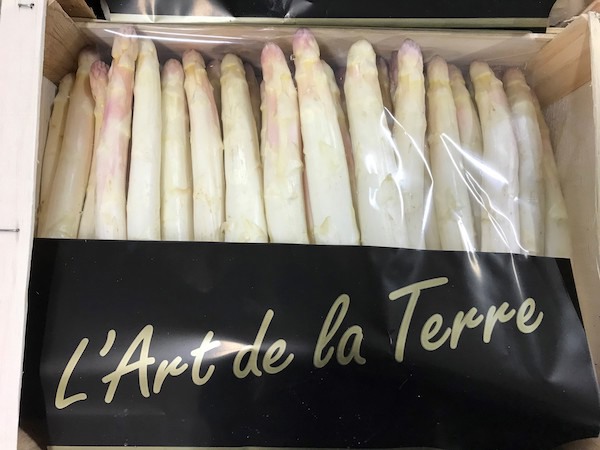The fresh vegetable division of the Arterris cooperative covers two French regions: Occitania and PACA, which represent about 50,000 tons of production (carrots, turnips, black radishes, asparagus, potatoes, cucumbers, eggplants, peppers…). For its commercial development, Arterris relies on 3 structures: Kultive, Jmo Prim and Massaferro.
The asparagus is a historical crop of the structure. The production radiates in the Haute-Garonne, Aude, Hérault and Lot-et-Garonne departments. “All these productions are part of a producers' organization and they are marketed by Kultive. Although the fresh vegetable division is currently a minor activity for the group, it is a fast-growing, value-adding and relatively dynamic sector,” explains Louise Le Goallec, head of production and development of fresh vegetables at Arterris.

Asparagus, a historical crop for Arterris
The cooperative has been developing in the potato sector, among others, with the recent acquisition of Massaferro, but its producers have been growing asparagus since 1980. "Admittedly, the surface area cultivated is smaller than in the Landes region, but the production is nonetheless a reference in the region, since it has been produced for over 40 years. We do not have producers specialized in the cultivation of asparagus. On all the farms, the asparagus represents a diversification activity alongside other field crops and/or vines, with an average surface area of 5 ha.”

A production oriented essentially on green asparagus
Today, the organization of producers represents a surface area of 73 ha (65 ha in production). 70% of this area is used for green asparagus, with a good dynamic of plantation for 2 years. In total, the cooperative expects to harvest 215 tons of asparagus this year, coming from the organization’s surface and other independent producers. The organization also provides its producers with a packaging station in Bram. “At first, we mainly produced white asparagus, following the consumption trends. But 3 years ago, we made the choice to turn to green asparagus.”

The soils are more adapted to the culture of green asparagus
This orientation makes sense both in terms of production and market. “We have clay-limestone soils, which means that the land is cold and takes time to warm up. Due to the climate conditions, we often have to harvest late, which means that we sometimes miss Easter, the time of year when asparagus consumption is highest. Although the production of green asparagus is more technical than for white asparagus, it requires less soil for ridging. We do not even ridge systematically every year. For these reasons, the production of white asparagus is often reserved for lighter loam soils. The green asparagus are more adapted to our soils and their production is also more remunerative. For the past few years, the consumption of green asparagus has been increasing in France, especially among the younger generation, who appreciate the fact that it does not need to be peeled.”

Managing early production and techniques to spread the campaign better
In order to spread the campaign out as much as possible, the Arterris producers use different production systems depending on basin, soil and climate conditions. “We try to play with the different harvest times of our basins in order to spread the campaign as much as possible and control the production peaks. To accentuate or delay the precocity, we use different techniques such as production under photovoltaic greenhouses, classic mulching, mini-tunnels with hoops or even cultivation without mulching. We are then able to offer asparagus from March 15th until the end of June. But of course, despite all our efforts, the production dynamics always depend on the weather.”

The 2023 campaign has slowed down
The 2023 campaign looked promising at first, but the cold temperatures of the past week have slowed down the production. “The campaign started well, despite some storage difficulties due to last year’s high temperatures. The irrigation and the cold winter temperatures allowed us to prepare the crop in good conditions. Unfortunately, the production is struggling because of the unstable weather. We have not yet had a real production peak and we may not even have one. This campaign is quite different from last year's which was relatively exceptional in terms of production. For the moment, it looks like the 2023 campaign will just be average.”
Strong competition from Spain
The market of green asparagus seems more fluid than that of white asparagus during the famous production peaks but it is no less competitive. “Of course, the production of green asparagus in France is smaller but their consumption is increasing. This has allowed us to sell our merchandise very well during the previous campaign. The market is not saturated by the national offer, but there is still strong pressure from foreign competition, especially from Spain. Currently, this origin can be found in significant quantities on the shelves. Through the PDO Asparagus of France, we are therefore trying to promote the consumption of French asparagus.”
Arterris has a strategy to develop asparagus production, with a target of 400 tons in the coming years. “The producers who are part of the organization have access to common tools such as the packaging station. Arterris offers an interesting pooling of production means, coupled with the possibility for producers to be accompanied on investments specific to asparagus cultivation.”
For more information:
Louise Le Goallec
Arterris
[email protected]










